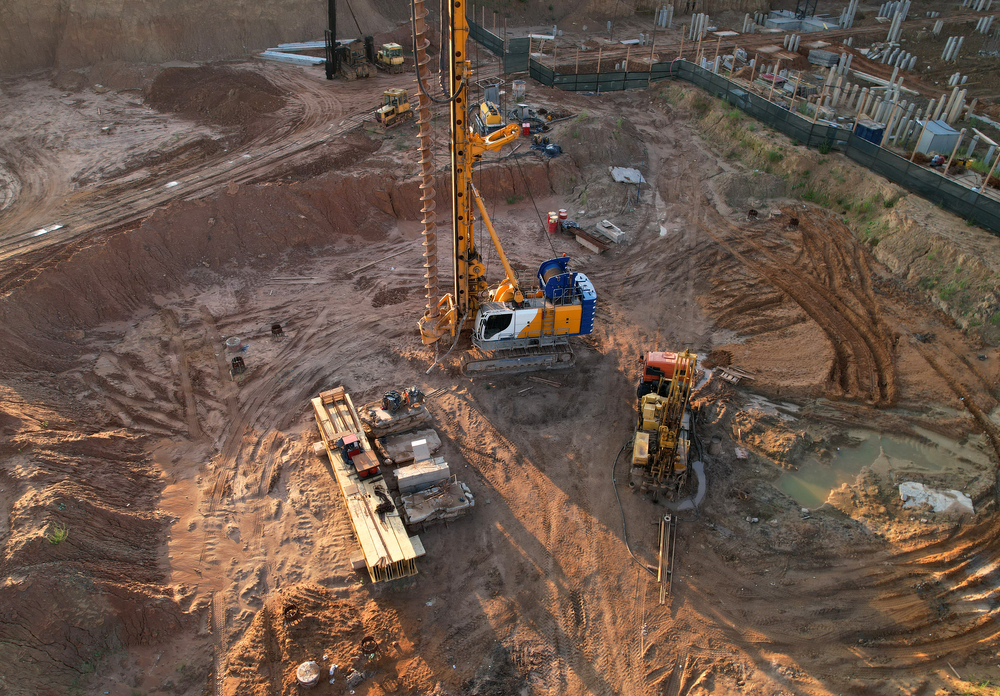How Geotheta can Save You Time, Stress, and Money.
How Geotheta can Save You Time, Stress, and Money.
Blog Article
An Unbiased View of Geotheta
Table of ContentsGeotheta for Beginners9 Simple Techniques For GeothetaThe Only Guide for GeothetaThe 7-Second Trick For GeothetaThings about Geotheta

They carry out website examinations, collect examples, carry out research laboratory tests, and examine information to evaluate the suitability of the ground for construction jobs - Consulting Engineers. Based upon their searchings for, geotechnical designers give suggestions for foundation style, incline security, retaining structures, and mitigation of geotechnical dangers. They team up with various other professionals, such as architects, structural engineers, and building teams, to make sure that geotechnical factors to consider are incorporated right into the total task layout and execution
By assessing the habits and residential properties of dirt and rock, they can determine possible geotechnical threats such as landslides, dirt negotiation, or incline instability. Their know-how assists stop failures or accidents that can endanger lives and building. Right here are some in-depth tasks and obligations of a geotechnical engineer: Site Examination: Geotechnical designers conduct site investigations to gather information on subsurface problems.
They analyze the information to understand the homes and habits of the dirt and rock, including their stamina, leaks in the structure, compaction features, and groundwater conditions. Geotechnical Analysis and Layout: Geotechnical designers analyze the data gathered during site investigations to analyze the security and viability of the website for construction projects. They perform geotechnical calculations and modeling to evaluate factors such as birthing ability, negotiation, slope stability, lateral earth stress, and groundwater circulation.
Things about Geotheta
Structure Layout: Geotechnical engineers play an important role in designing structures that can safely sustain the designated structure. They assess the dirt conditions and lots demands to identify the appropriate structure type, such as superficial structures (e.g., grounds), deep structures (e.g (http://peterjackson.mee.nu/where_i_work#c2299)., stacks), or specialized methods like soil improvement. They consider variables such as negotiation restrictions, bearing ability, and soil-structure communication to establish optimal structure designs
They examine construction strategies, monitor site tasks, and perform field inspections to verify that the layout suggestions are complied with. If unforeseen geotechnical problems occur, they assess the scenario and supply suggestions for remediation or changes to the style. Risk Evaluation and Mitigation: Geotechnical designers evaluate geotechnical threats and dangers related to the task site, such as landslides, liquefaction, or dirt erosion.

Partnership and Communication: Geotechnical designers work very closely with other professionals entailed in a job, such as engineers, structural engineers, and building and construction teams. Effective communication and cooperation are necessary to integrate geotechnical factors to consider right into the total job design and building and construction procedure. Geotechnical engineers give technical knowledge, solution questions, and guarantee that geotechnical needs are satisfied.
The smart Trick of Geotheta That Nobody is Discussing
Here are some types of geotechnical designers: Structure Engineer: Foundation engineers concentrate on designing and examining structures for frameworks. They evaluate the soil problems, lots needs, and site attributes to establish one read review of the most appropriate foundation kind and style, such as superficial structures, deep structures, or specialized strategies like heap structures.
They review the variables affecting incline security, such as dirt buildings, groundwater problems, and incline geometry, and create approaches to stop incline failings and minimize threats. Quake Designer: Quake designers focus on analyzing and creating frameworks to hold up against seismic pressures. They analyze the seismic threat of a website, review dirt liquefaction capacity, and establish seismic design criteria to ensure the safety and resilience of frameworks throughout earthquakes.
They perform area screening, gather samples, and examine the gathered data to identify the dirt properties, geologic developments, and groundwater problems at a website. Geotechnical Instrumentation Designer: Geotechnical instrumentation designers concentrate on tracking and measuring the habits of soil, rock, and frameworks. They set up and preserve instrumentation systems that keep an eye on aspects such as dirt settlement, groundwater degrees, slope movements, and architectural displacements to assess efficiency and offer early cautions of prospective issues.
Fascination About Geotheta
They carry out tests such as triaxial examinations, loan consolidation tests, straight shear examinations, and permeability examinations to collect data for geotechnical analysis and layout. Geosynthetics Engineer: Geosynthetics designers concentrate on the style and application of geosynthetic products, such as geotextiles, geogrids, and geomembranes. They make use of these materials to enhance dirt stability, strengthen inclines, offer drain solutions, and control erosion.
They tend to be investigative people, which indicates they're intellectual, reflective, and inquisitive. They are curious, methodical, rational, logical, and logical. Some of them are also social, meaning they're kind, charitable, participating, patient, caring, useful, empathetic, tactful, and pleasant - Tailings Engineer.
In the office atmosphere, geotechnical engineers make use of specialized software devices to do estimations, develop styles, and evaluate data. They prepare reports, testimonial job requirements, connect with clients and team participants, and coordinate task activities. The workplace setup gives a conducive setting for research study, analysis, and collaboration with various other specialists included in the project.
Our Geotheta PDFs
They frequently see job websites to perform site examinations, examine geotechnical conditions, and collect information for analysis. These visits include traveling to various locations, often in remote or challenging surfaces. Geotechnical designers may do dirt sampling, conduct tests, and display construction activities to make certain that the geotechnical aspects of the job are being implemented properly.
Geotechnical designers also operate in specialized geotechnical research laboratories. In these facilities, they conduct experiments, do examinations on soil and rock examples, and assess the design residential or commercial properties of the materials. Geotechnical research laboratory designers function extensively in these settings, handling screening equipment, operating tools, and recording data. They collaborate with other research laboratory team to ensure accurate and reputable screening outcomes.
Report this page